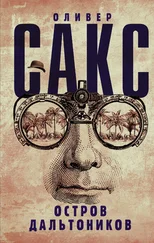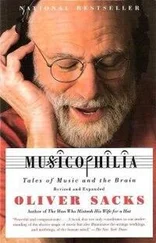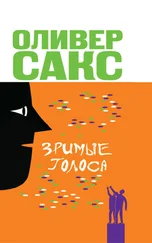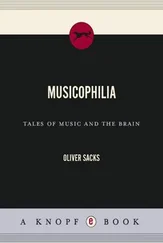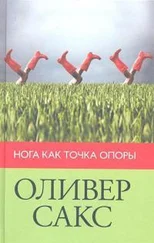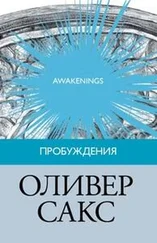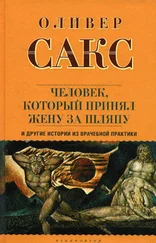* * *
Chemical exploration, chemical discovery, was all the more romantic for its dangers. I felt a certain boyish glee in playing with these dangerous substances, and I was struck, in my reading, by the range of accidents that had befallen the pioneers. Few naturalists had been devoured by wild animals or stung to death by noxious plants or insects; few physicists had lost their eyesight gazing at the heavens, or broken a leg on an inclined plane; but many chemists had lost their eyes, limbs, and even their lives, usually through producing inadvertent explosions or toxins. All the early investigators of phosphorus had burned themselves severely. Bunsen, investigating cacodyl cyanide, lost his right eye in an explosion, and very nearly his life. Several later experimenters, like Moissan, trying to make diamond from graphite in intensely heated, high-pressure ‘bombs’, threatened to blow themselves and their fellow workers to kingdom come. Humphry Davy, one of my particular heroes, had been nearly asphyxiated by nitrous oxide, poisoned himself with nitrogen peroxide, and severely inflamed his lungs with hydrofluoric acid.
Davy also experimented with the first ‘high’ explosive, nitrogen trichloride, which had cost many people fingers and eyes. He discovered several new ways of making the combination of nitrogen and chlorine, and caused a violent explosion on one occasion while he was visiting a friend. Davy himself was partially blinded, and did not recover fully for another four months. (We were not told what damage was done to his friend’s house.)
The Discovery of the Elements devoted an entire section to ‘The Fluorine Martyrs.’ Although elemental chlorine had been isolated from hydrochloric acid in the 1770 s, its far more active cousin, fluorine, was not so easily obtained. All the early experimenters, I read, ‘suffered the frightful torture of hydrofluoric acid poisoning’, and at least two of them died in the process. Fluorine was only isolated in 1886, after almost a century of dangerous trying.
I was fascinated by reading this history, and immediately, recklessly, wanted to obtain fluorine for myself. Hydrofluoric acid was easy to get: Uncle Tungsten used vast quantities of it to ‘pearl’ his lightbulbs, and I had seen great carboys of it in his factory in Hoxton. But when I told my parents the story of the fluorine martyrs, they forbade me to experiment with it in the house. (I compromised by keeping a small gutta-percha bottle of hydrofluoric acid in my lab, but my own fear of it was such that I never actually opened the bottle.)
It was really only later, when I thought about it, that I became astonished at the nonchalant way in which Griffin (and my other books) proposed the use of intensely poisonous substances. I had not the least difficulty getting potassium cyanide from the chemist’s, the pharmacy, down the road – it was normally used for collecting insects in a killing bottle – but I could rather easily have killed myself with the stuff. I gathered, over a couple of years, a variety of chemicals that could have poisoned or blown up the entire street, but I was careful – or lucky. [11] Now, of course, none of these chemicals can be bought, and even school or museum laboratories are increasingly confined to reagents that are less hazardous – and less fun. Linus Pauling, in an autobiographical sketch, described how he, too, obtained potassium cyanide (for a killing bottle) from a local druggist: Just think of the differences today. A young person gets interested in chemistry and is given a chemical set. But it doesn’t contain potassium cyanide. It doesn’t even contain copper sulfate or anything else interesting because all the interesting chemicals are considered dangerous substances. Therefore, these budding young chemists don’t have a chance to do anything engrossing with their chemistry sets. As I look back, I think it is pretty remarkable that Mr. Ziegler, this friend of the family, would have so easily turned over one-third of an ounce of potassium cyanide to me, an eleven-year-old boy. When I paid a visit not long ago to the old building in Finchley which had been Griffin & Tatlock’s home a half century ago, it was no longer there. Such shops, such suppliers, which had provided chemicals and simple apparatus and unimaginable delights for generations, have now all but vanished.
* * *
If my nose was stimulated in the lab by certain smells – the pungent, irritating smell of ammonia or sulphur dioxide, the odious smell of hydrogen sulphide – it was much more pleasantly stimulated by the garden outdoors and the kitchen, with its food smells, and its essences and spices, inside. What gave coffee its aroma? What were the essential substances in cloves, apples, roses? What gave onions and garlic and radishes their pungent smell? What, for that matter, gave rubber its peculiar odor? I especially liked the smell of hot rubber, which seemed to me to have a slightly human smell (both rubber and people, I learned later, contain odoriferous isoprene). Why did butter and milk acquire sour smells if they ‘went off’, as they tended to do in hot weather? What gave ‘turps’, oil of turpentine, its lovely, piney smell? Besides all these ‘natural’ smells, there were the smells of the alcohol and acetone that my father used in the surgery, and of the chloroform and ether in my mother’s obstetric bag. There was the gentle, pleasant, medical smell of iodoform, used to disinfect cuts, and the harsh smell of carbolic acid, used to disinfect lavatories (it carried a skull and crossbones on its label).
Scents could be distilled, it seemed, from all parts of a plant – leaves, petals, roots, bark. I tried to extract some fragrances by steam distillation, gathering rose petals and magnolia blossoms and grass cuttings from the garden and boiling them with water. Their essential oils would be volatilized in the steam and settle on top of the distillate as it cooled (the heavy, brownish essential oil of onions or garlic, though, would sink to the bottom). Alternatively one could use fat – butter fat, chicken fat – to make a fatty extract, a pomatum; or use solvents like acetone or ether. On the whole my extractions were not too successful, but I succeeded in making some reasonable lavender water, and extracting clove oil and cinnamon oil with acetone. The most productive extractions came from my visits to Hampstead Heath, when I gathered large bags of pine needles and made a fine, bracing green oil full of terpenes – the smell reminded me a little of the Friar’s Balsam that I would be set to inhale, in steam, whenever I had a cold.
I loved the smell of fruits and vegetables and would savor everything, sniff at it, before I ate. We had a pear tree in the garden, and my mother would make a thick pear nectar from its fruit, in which the smell of pears seemed heightened. But the scent of pears, I had read, could be made artificially, too (as was done with ‘pear drops’), without using any pears. One had only to start with one of the alcohols – ethyl, methyl, amyl, whatever – and distill it with acetic acid to form the corresponding ester. I was amazed that something as simple as ethyl acetate could be responsible for the complex, delicious smell of pears, and that tiny chemical changes could transform this to other fruity scents – change the ethyl to isoamyl, and one had the smell of ripening apples; other small modifications would give esters that smelled of bananas or apricots or pineapples or grapes. This was my first experience of the power of chemical synthesis.
There were, besides the pleasant fruity smells, a number of vile, animally smells that one could easily make from simple ingredients or extract from plants. Auntie Len, with her botanical knowledge, sometimes colluded with me here, and introduced me to a plant called stinking goosefoot, a species of Chenopodium . If this was distilled in an alkaline medium – I used soda – a particularly vile-smelling and volatile material came off, which stank of rotten crabs or fish. The volatile substance, trimethylamine, was surprisingly simple – I had thought the smell of rotting fish would have a more complex basis. In America, Len told me, they had a plant called skunk cabbage, and this contained compounds that smelled like corpses or putrefying flesh; I asked if she could get me some, but, perhaps fortunately, she could not.
Читать дальше


